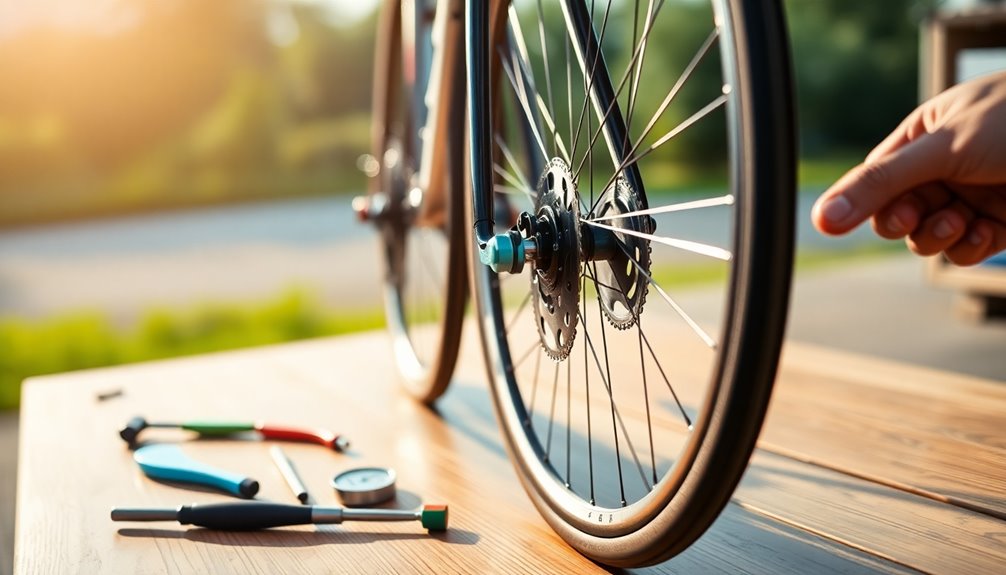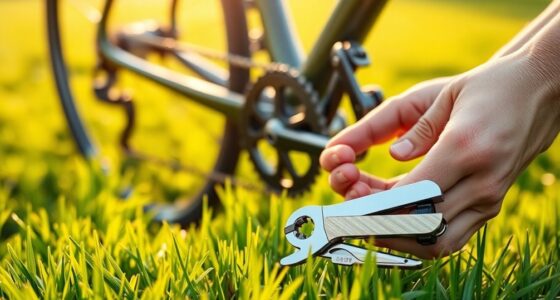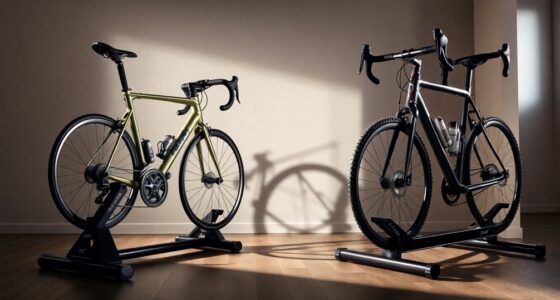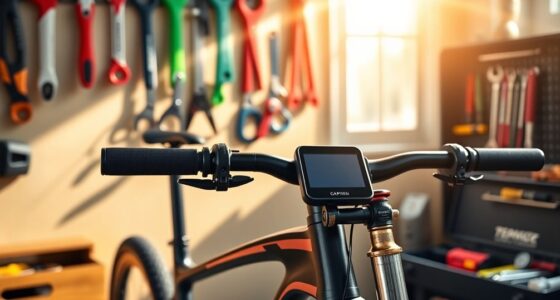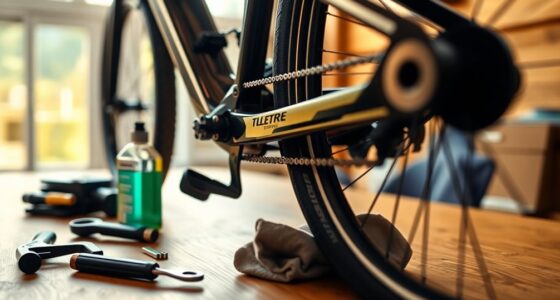To set up your bike for a smooth ride, start by adjusting your saddle height for comfort and ideal power transfer. Make sure the handlebars are level with or slightly above the saddle for a relaxed position. Don't forget to check your pedal setup; a correct heel position enhances efficiency. Finally, invest in padded cycling gear for added comfort. With these adjustments, you'll enjoy longer, more enjoyable rides. Keep going, and you'll discover even more essential tips!
Key Takeaways
- Ensure saddle height is adjusted for optimal leg extension to prevent knee pain and enhance pedaling efficiency.
- Align handlebars at or slightly above saddle height for a comfortable and relaxed riding position.
- Choose a saddle that supports your sit bones to minimize discomfort during rides.
- Regularly assess pedal mechanics, ensuring heel positioning maximizes power transfer and stability.
- Invest in padded cycling shorts and gloves to reduce friction and absorb vibrations for a smoother ride.
Getting Started
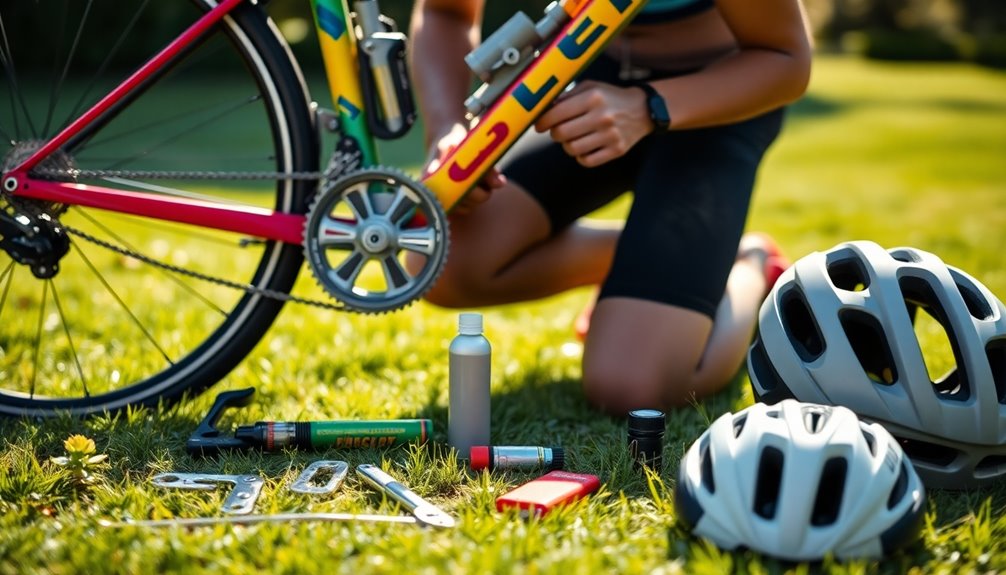
When you're setting up your bike, seeking in-store assistance can make all the difference.
Focusing on contact points like the handlebars, pedals, and saddle for one is essential for your comfort. A well-adjusted saddle height and position can greatly improve your riding experience, reducing the risk of discomfort or pain.
Confirm your handlebars are level with or slightly above the saddle, promoting better posture and minimizing strain on your wrists and neck. You should also achieve proper leg extension by maintaining a square position in the saddle and verifying your heel touches the pedal.
Regularly evaluating your bike fit based on your riding experience can enhance performance and comfort, so don't hesitate to make adjustments as needed. Additionally, consider a 48V battery system for improved power and efficiency if you decide to convert your bike to an electric model.
Saddles and Sitting Comfort
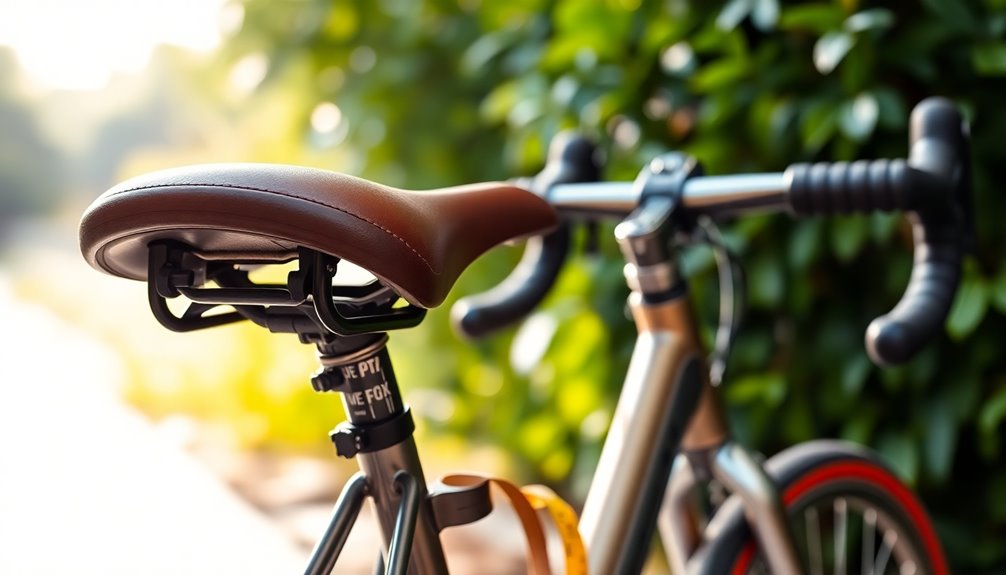
Finding the right saddle is crucial for your comfort on long rides, as it directly affects how well you can enjoy your time on the bike. A proper saddle fit supports your sit bones, preventing discomfort. To guarantee peak comfort, consider the following:
| Saddle Type | Key Features |
|---|---|
| Wider | Suitable for those with wider sit bones |
| Narrower | Ideal for a more aggressive riding style |
| Softer | Provides extra cushioning |
| Harder | Offers more support for long rides |
Correct saddle height is also important; if it's too high or low, you may experience knee pain and reduced pedaling efficiency. An upright position helps distribute weight effectively, enhancing overall comfort. Choose wisely! Additionally, ensure your saddle is aligned correctly to avoid unnecessary strain on your drivetrain components.
Hands and Handlebars
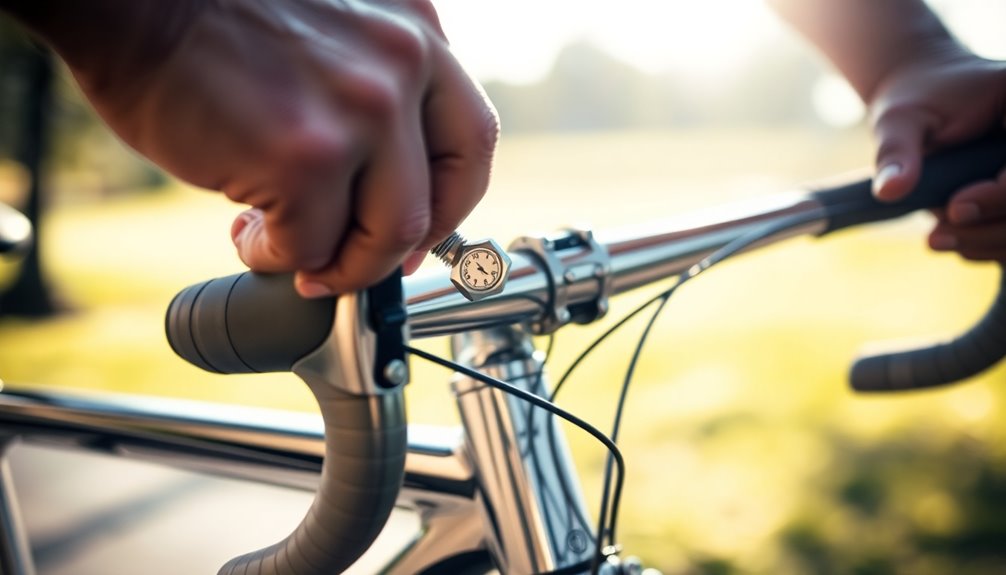
The connection between your hands and handlebars plays a vital role in your cycling experience. Adjusting the handlebar height to be at or slightly above saddle height enhances your comfort and posture, allowing for relaxed arms and reduced wrist strain.
Proper hand positioning is essential; make sure your hands rest comfortably, keeping your torso, neck, and arms relaxed during rides. If you're feeling discomfort, consider a shorter stem or sliding your saddle forward.
Urban e-bike riders often prefer an upright position, which minimizes hand discomfort and improves visibility. Regularly assess your handlebars, and don't forget about the brake levers; even minor adjustments can greatly impact your overall riding experience, ensuring you enjoy every ride to the fullest.
Feet and Pedals
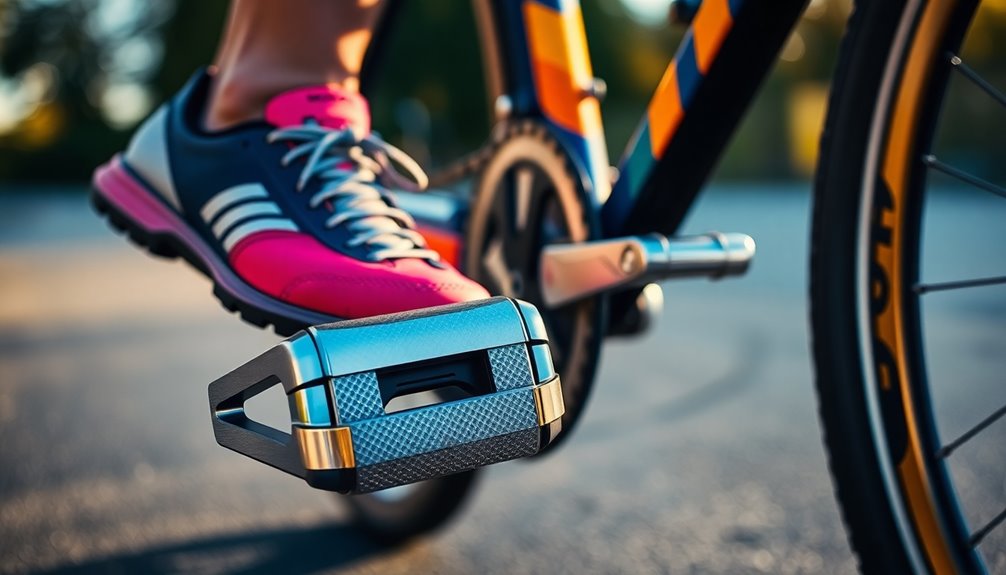
Your connection to the bike doesn't stop at your hands; your feet and pedals play a significant role in your overall performance and comfort. Proper heel positioning at a 6 o'clock angle guarantees peak power transfer and prevents knee strain. Maintain a square leg extension while pedaling to enhance your riding position, promoting comfort and efficiency. Confirm your heel contacts the pedal for better stability and control. Adjusting your saddle height can alleviate knee pain from improper leg extension. Consider using clip-in shoes or flat pedals, as firm shoe soles improve power transfer.
| Aspect | Importance | Tips |
|---|---|---|
| Heel Positioning | Peak power transfer | Keep at a 6 o'clock angle |
| Leg Extension | Comfort and efficiency | Maintain square position |
| Pedal Contact | Stability and control | Confirm heel makes contact |
| Saddle Height | Prevent knee pain | Adjust for proper extension |
| Shoe Type | Improved connection | Use clip-ins or flat pedals |
Gear and Accessories for Comfort
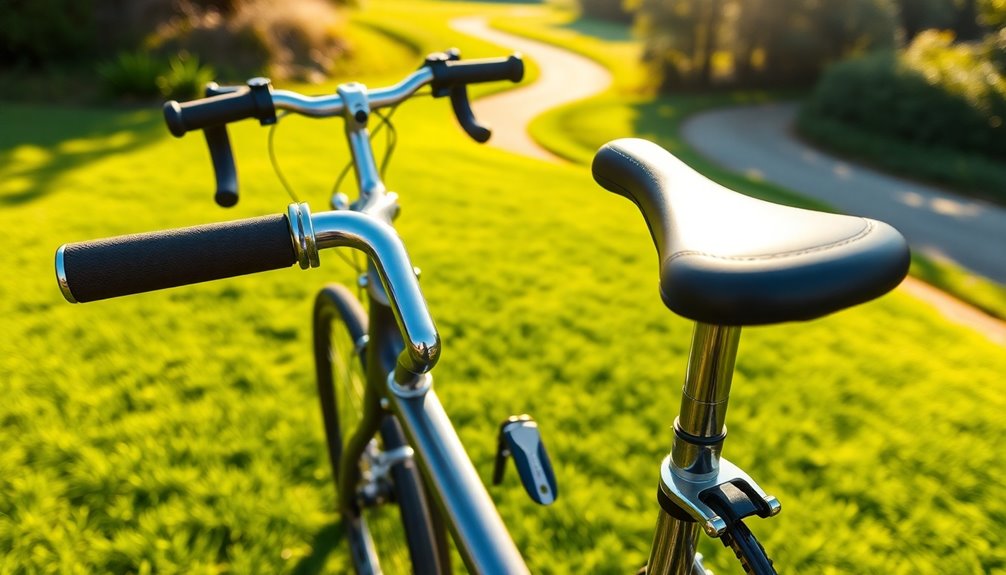
Comfort is key when it comes to enjoying your rides, and the right gear and accessories can make all the difference. Investing in padded cycling shorts not only minimizes friction but also offers extra protection for longer rides.
Look for seam-free designs to reduce rubbing and chafing, enhancing your overall experience. Padded gloves are another essential; they absorb vibrations and improve grip, giving you better control while cycling.
When choosing between clip-in shoes and flat pedals, remember that firm shoe soles can enhance power transfer, making your pedaling more efficient.
Frequently Asked Questions
How Can I Make My Bike Ride Smoother?
To make your bike ride smoother, start by checking your tire pressure; it should be within the recommended range.
Regularly lubricate your chain to reduce friction, ensuring better shifting.
Adjust your saddle height for proper leg extension, which improves your pedal stroke efficiency.
Invest in padded cycling shorts and gloves to absorb vibrations.
Finally, perform regular maintenance on brakes and gears to keep everything functioning at its best for a more enjoyable ride.
How Do You Ride a Bike Smoothly?
To ride a bike smoothly, focus on your pedal technique. Keep your heels down and make certain your knees align with your toes during each stroke.
Maintain a steady cadence, avoiding sudden accelerations or decelerations. Use your core to stabilize your body, allowing your arms to relax on the handlebars.
Pay attention to the terrain, adjusting your posture accordingly. Finally, practice gradual turns to enhance balance and control, making your ride more enjoyable.
What Is Rule 5 in Cycling?
Did you know that cyclists who regularly ride in adverse weather conditions can increase their endurance by nearly 20%?
Rule 5 in cycling emphasizes embracing discomfort, especially during tough weather. It encourages you to push through cold, wet, or windy rides, building both mental and physical resilience.
How to Be More Comfortable Riding a Bike?
To be more comfortable riding a bike, you should start by adjusting your saddle height so your legs fully extend when pedaling.
Choose a saddle that fits your sit bones and matches your riding style.
Modify your handlebar height for better posture, and consider investing in padded cycling shorts and gloves to absorb vibrations.
Regularly assess your bike fit to guarantee it meets your comfort needs, especially as your riding style evolves.
Conclusion
As you glide down the winding path, the sun warms your back and the breeze whispers through the trees, you feel the seamless harmony of your bike. With the perfect saddle cradling you, hands relaxed on the handlebars, and feet dancing on the pedals, each turn becomes a joyful adventure. You've set up your bike for comfort, transforming every ride into a delightful escape. So hop on, breathe in the fresh air, and let the journey unfold.
